Inspired from Ants Colony: Smart Routing Algorithm of Wireless Sensor Network
Abstract
:1. Introduction
2. Ant Colony Optimization Algorithm
3. Proposed Algorithm
- is the pheromone amount on edge ,
- is is the opportunity of the edge ,
- is a variable to adjust the effect of ,
- is a variable to adjust the effect of ,
- is the residual energy of node i,
- is the residual energy of node j,
- is a variable to adjust the effect of ,
- is a variable to adjust the effect of .
- is the evaporation rate of pheromones,
- is the amount of pheromone put, generally offered by:
- L is the length of the path,The opportunity of the edge is given by this equation
| Algorithm 1: Smart Routing Algorithm (SRA) |
 |
- is the distance among the sender and the addressee,
- and are the amplifier energy, for the first, in the free space model, and, for the second, in the multipath model.
- i is the sensor number.
- n is the number of participating sensors in this network.
4. Simulation Results
5. Conclusions
Author Contributions
Conflicts of Interest
Abbreviations
| WSN | Wireless Sensor Network |
| SRA | Smart Routing Algorithm |
| ACO | Ant Colony Optimization |
| LEACH | Low Energy Adaptive Clustering Hierarchy |
| DD | Directed Diffusion |
| EAS | Elitist Ant System |
| Max-Min As | Maximum and Minimum Ant System |
| AS-Rank | Rank-Based Ant System |
| ACS | Ant Colony System |
| AS | Ant System |
| IoT | Internet of Things |
| M2M | Machine to Machine |
References
- Bouarafa, S.; Saadane, R.; Aboutajdine, D. Reduction of Energy Consumption in WSN Using the Generalized Pythagorean Theorem. In Proceedings of the 5th International Conference on Multimedia Computing and Systems (ICMCS), Marrakech, Morocco, 29 September–1 October 2016; p. 720. [Google Scholar]
- Deng, Z.; Wang, G.J.; Ma, Z. A Leaping Based Routing Protocol with Load Balancing Support in Wireless Sensor Network. Chin. J. Sens. Actuators 2009, 22, 407–412. [Google Scholar]
- Stutzle, T.; Dorigo, M. A short convergence proof for a class of ACO algorithms. IEEE Trans. Evol. Comput. 2002, 6, 358–365. [Google Scholar] [CrossRef]
- Boondirek, A.; Triampo, W.; Nuttavut, N. A Review of Cellular Automata Models of Tumor Growth. Int. Math. Forum 2010, 5, 3023–3029. [Google Scholar]
- Tome, T.; Drugowich de Felicio, J.R. Probabilistic Cellular Automata Describing a Biological Immune System. Phys. Rev. E 1996, 3976–3981. [Google Scholar] [CrossRef]
- Sloot, P.; Chen, F.; Boucher, C. Cellular Automaton Model of Drug Therapy for HIV Infection. In Proceedings of the 5th International Conference on Cellular Automata for Research and Industry (ACRI 02), Geneva, Switzerland, 9–11 October 2002; pp. 282–293. [Google Scholar]
- Bouarafa, S.; Saadane, R.; Rahmani, M.D. Study of Energy Consumption in Wireless Sensor Networks Using S-Rhombus, S-Square and S-Circle Deployment. Int. J. Adv. Res. Comput. Sci. 2017, 7, 402–410. [Google Scholar]
- Singh, S.K.; Singh, M.P.; Singh, D.K. A Survey of Energy-Efficient Hierarchical Cluster-Based Routing in Wireless Sensor Networks. Int. J. Adv. Netw. Appl. 2010, 2, 570–580. [Google Scholar]
- Khandani, A.E.; Abounadi, J.; Modiano, E.; Zheng, L. Cooperative Routing In Static Wireless Networks. IEEE Trans. Commun. 2007, 55, 2185–2192. [Google Scholar] [CrossRef]
- Ibrahim, A.S.; Han, Z.; Liu, K.J.R. Distributed Energy-Efficient Cooperative Routing in Wireless Networks. IEEE Trans. Wireless Commun. 2007, 7, 3930–3941. [Google Scholar] [CrossRef]
- Kang, I.; Poovendran, R. Maximizing Static Network Lifetime Of Wireless Broadcast Ad Hoc networks. In Proceedings of the IEEE International Conference On Communications, Anchorage, AK, USA, 11–15 May 2003; pp. 2256–2261. [Google Scholar]
- Tsiropoulou, E.E.; Mitsis, G.; Papavassiliou, S. Interest-aware energy collection & resource management in machine to machine communications. Ad Hoc Netw. 2018, 68, 48–57. [Google Scholar]
- Yan, J.F.; Gao, Y.; Yang, L. Ant Colony Optimization for Wireless Sensor Networks Routing. In Proceedings of the 2011 International Conference on Machine Learning and Cybernetics, Guilin, China, 10–13 July 2011. [Google Scholar]
- Dorigo, M.; Birattari, M.; Stiitzle, T. Ant Colony Optimization. IEEE Comput. Intell. Mag. 2006, 1, 28–39. [Google Scholar] [CrossRef]
- Ikki, S.; Ahmed, M.H. Performance Analysis of Cooperative Diversity Wireless Networks over Nakagami-m Fading Channel. IEEE Commun. Lett. 2007, 11, 334–336. [Google Scholar] [CrossRef]
- Chang, J.H.; Tassiulas, L. Maximum Lifetime Routing in Wireless Sensor Networks. IEEE/Acm Trans. Netw. 2004, 12, 609–619. [Google Scholar] [CrossRef]
- Heinzelman, W.B.; Chandrakasan, A.P.; Balakrishnan, H. An application-specific protocol architecture for wireless microsensor networks. IEEE Trans. Wireless Commun. 2002, 1, 660–670. [Google Scholar] [CrossRef]

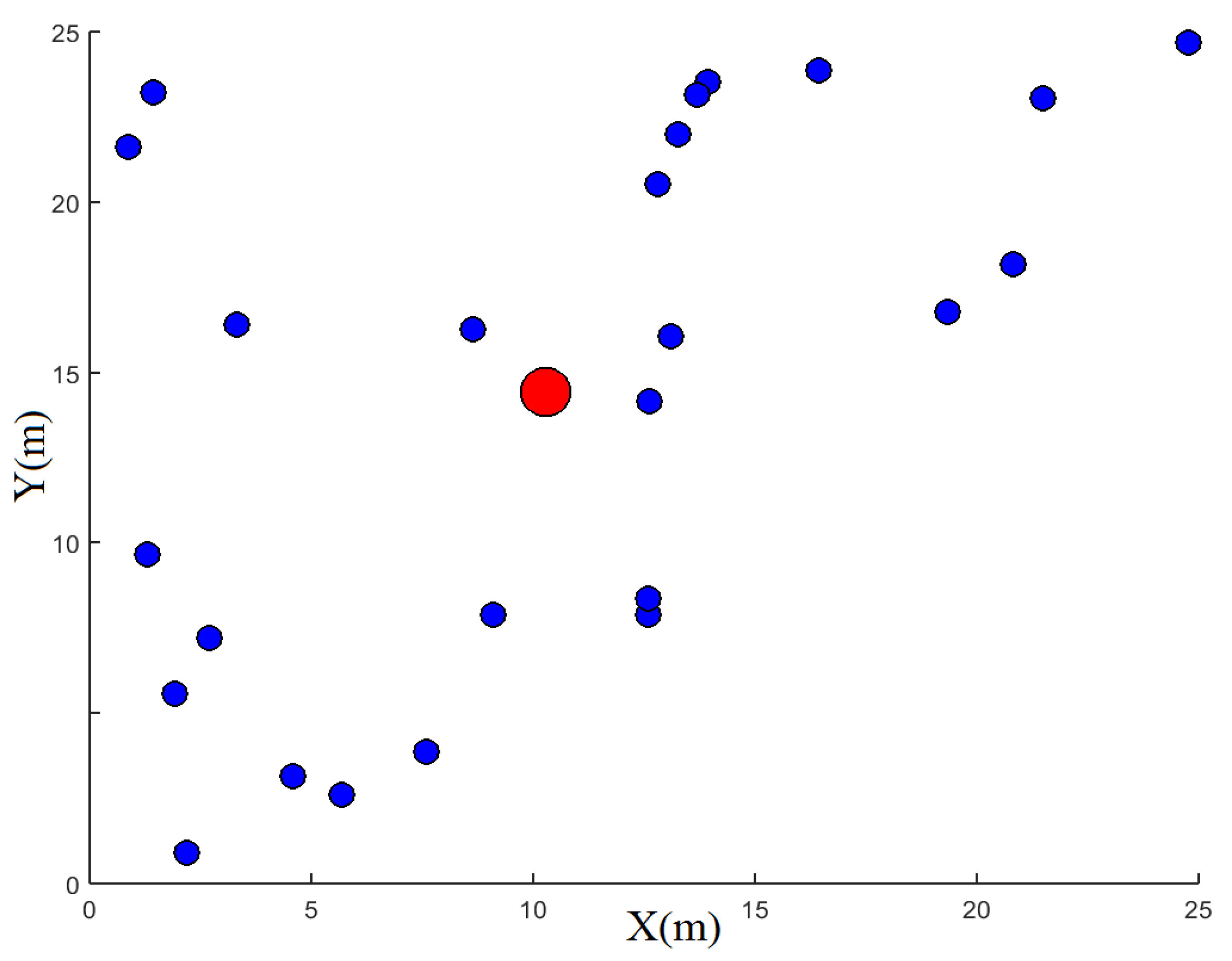


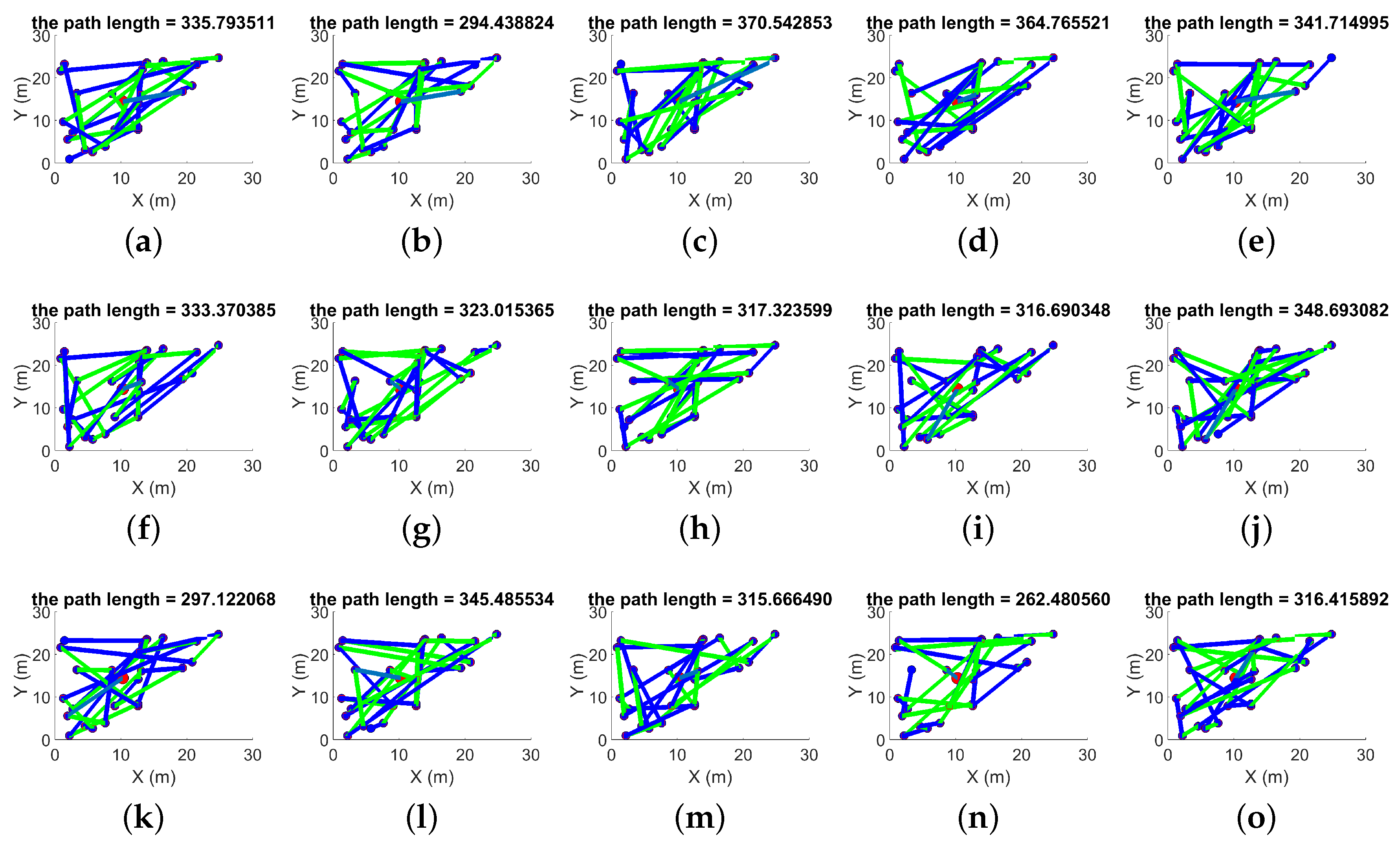
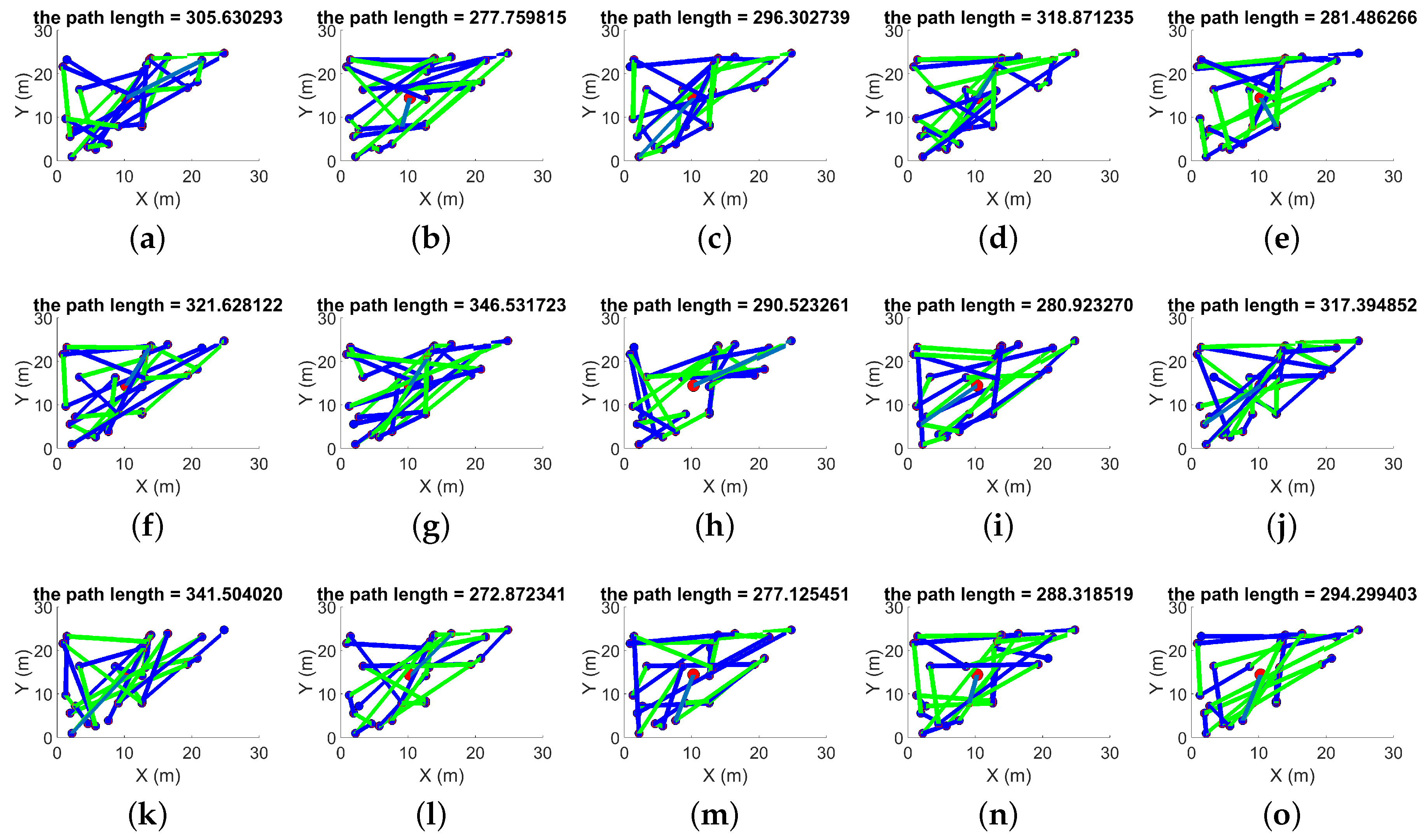
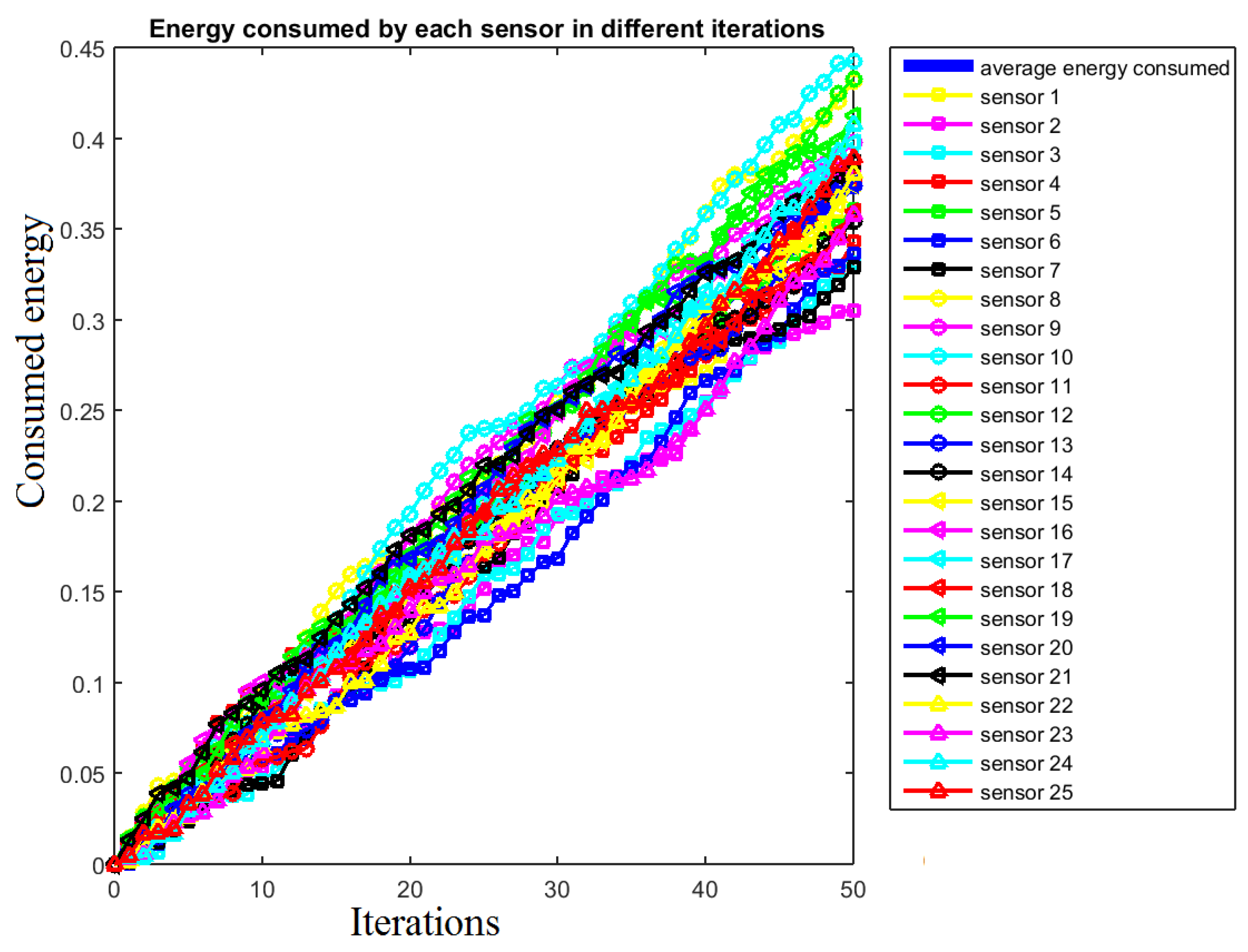


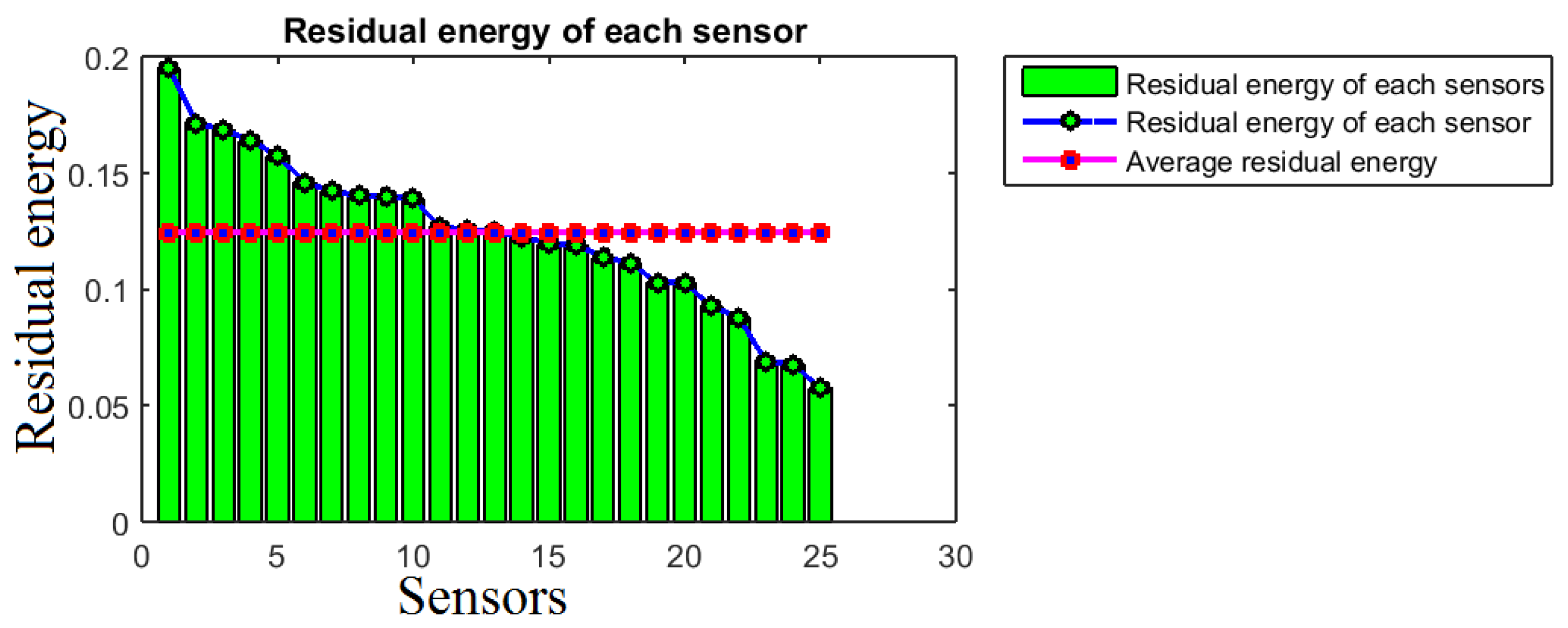
| Parameter | Value |
|---|---|
| 50 nJ/bit | |
| 10 pJ/bit/m | |
| 0.0013 pJ/bit/m | |
| 0.5 J | |
| k | 4000 bits |
| 50 nJ/bit/message | |
| 88 m | |
| 4 | |
| 2 | |
| 2 | |
| 4 | |
| 0.02 | |
| initial value of | 0.0001 |
| initial value of | 0.0001 |
© 2018 by the authors. Licensee MDPI, Basel, Switzerland. This article is an open access article distributed under the terms and conditions of the Creative Commons Attribution (CC BY) license (http://creativecommons.org/licenses/by/4.0/).
Share and Cite
Bouarafa, S.; Saadane, R.; Rahmani, M.D. Inspired from Ants Colony: Smart Routing Algorithm of Wireless Sensor Network. Information 2018, 9, 23. https://doi.org/10.3390/info9010023
Bouarafa S, Saadane R, Rahmani MD. Inspired from Ants Colony: Smart Routing Algorithm of Wireless Sensor Network. Information. 2018; 9(1):23. https://doi.org/10.3390/info9010023
Chicago/Turabian StyleBouarafa, Saleh, Rachid Saadane, and Moulay Driss Rahmani. 2018. "Inspired from Ants Colony: Smart Routing Algorithm of Wireless Sensor Network" Information 9, no. 1: 23. https://doi.org/10.3390/info9010023
APA StyleBouarafa, S., Saadane, R., & Rahmani, M. D. (2018). Inspired from Ants Colony: Smart Routing Algorithm of Wireless Sensor Network. Information, 9(1), 23. https://doi.org/10.3390/info9010023





